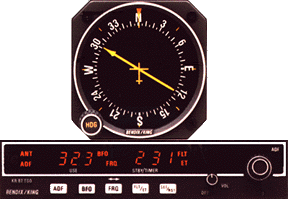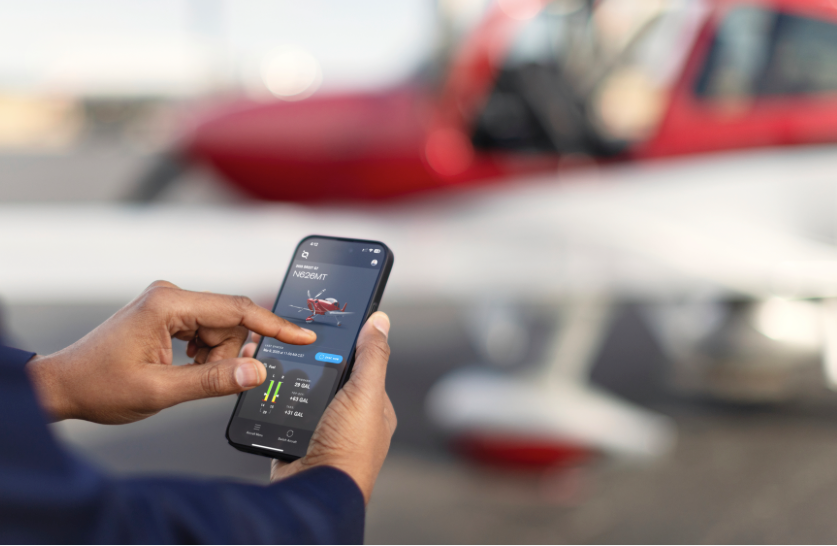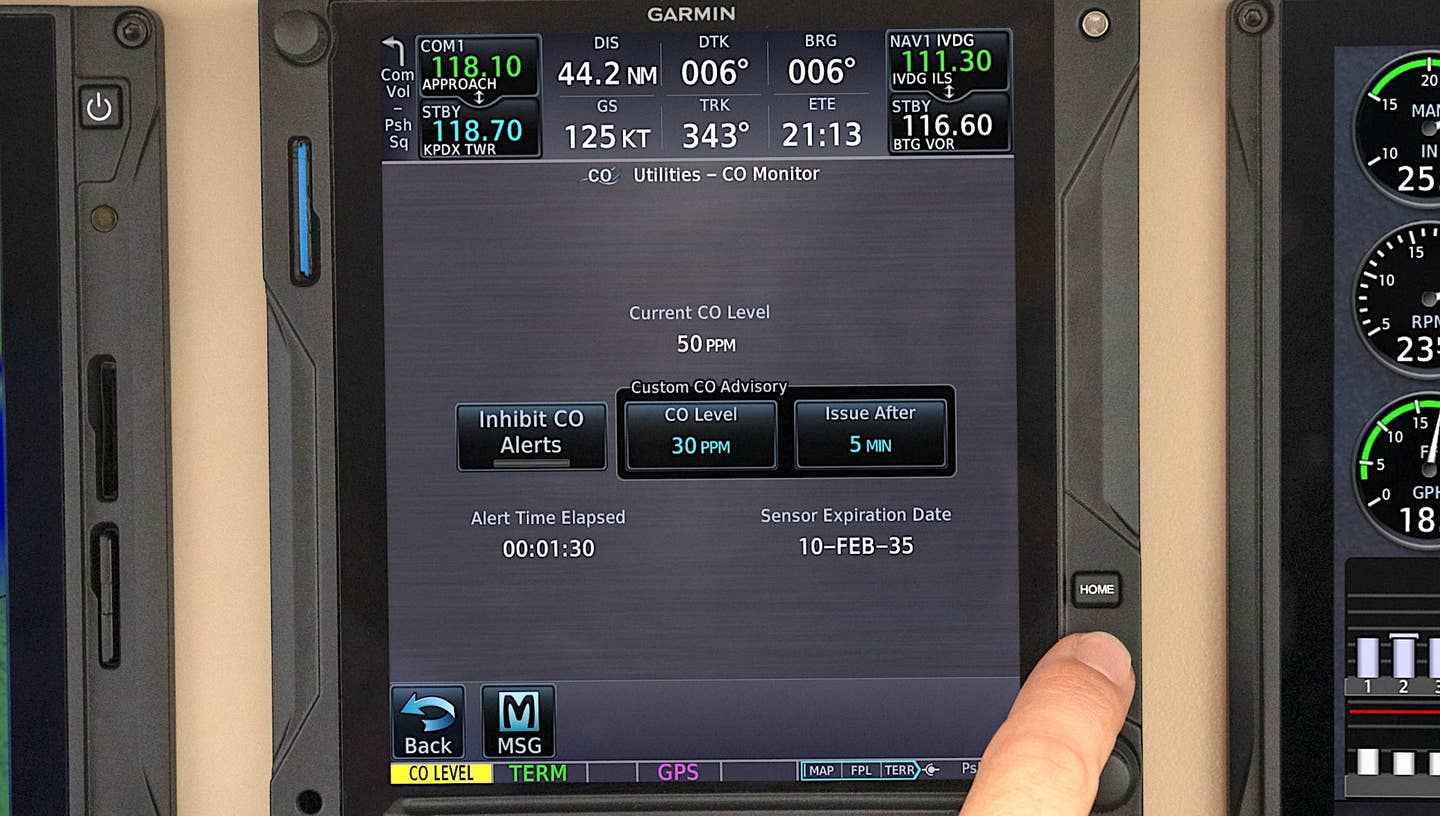ADF Basics
Ever wonder how an ADF knows which way the NDB is? Why it needs both a loop antenna and a sense antenna? Or what that “BFO” mode is good for? AVweb’s avionics editor takes you through the basics of one of the the most complicated avionics systems in your airplane, the lowly ADF.

 "ADF" stands forAutomatic Direction Finder. "Direction finder"because it's job is to point in the direction of whatever station you tune in."Automatic" because many years ago airplanes used manual direction finders (or"DFs") which required manually rotating a loop antenna looking for a null on asignal-strength meter.
"ADF" stands forAutomatic Direction Finder. "Direction finder"because it's job is to point in the direction of whatever station you tune in."Automatic" because many years ago airplanes used manual direction finders (or"DFs") which required manually rotating a loop antenna looking for a null on asignal-strength meter.
The purpose of the ADF is to point to a non-directional beacon and that is the onlypurpose. Yet believe it or not, the ADF is one of the most complicated avionics systems inour aircraft.
Theory of operation
It's easier for me to explain to my wife why I was seen out with a redhead than toexplain how the ADF works but I'll give it a shot. The radio waves from an NDB consist oftwo electromagnetic field components: an electric field called the E-field and a magneticfield called the H-field. (Why isn't the magnetic field called the M-field? Nobody seemsto know.)
These fields are perpendicular in space, and their amplitudes vary sinusoidally withtime. NDBs transmit a vertically polarized wave which means the E-field is vertical andthe H-field is horizontal. (You're following this, right?)
The H-field induces a voltage into the windings of the ADF loop antenna. The loopantenna consists of two perpendicular windings on a square ferrite core. By measuring thephase difference between these two windings the ADF is able to determine the direction ofthe beacon. (We could go into the sine and cosine theory here, but who really cares aslong as it points to the proper direction?)
Two antennas
In addition to the loop antenna, all ADFs have another antenna called the senseantenna. The ADF can tell from the loop antenna signals that the NDB is one of twopossible directions, 180 degrees apart, and the sense antenna lets it figure out which ofthe two is correct.
All ADF systems have loop and sense antennas. With the older ADFs, they are twoseparate antennas. The loop antenna is a flat antenna usually located on the bottom of theaircraft, while the sense antenna is a long wire that often runs from top of the tail tothe top of the of the cabin. (On larger aircraft, the sense antenna may be located on thebottom of the aircraft.)
More recent ADFs have a combined loop/sense antenna. It works far better than the oldsystems, plus it has less drag and is much less vulnerable to icing. The combinedloop/sense antenna usually goes on the bottom because it's easier to install there, and ifyou forget to lower your gear, it will be the first thing to get ground away. By the way,these antennas typically cost $800.00 so go easy on them when cleaning or moving.
Cockpit operation
 Most ADF receivers have several modes that the pilot can select. If the"ANT" mode is selected, the loop antenna is disabled and all receiving is donethrough the sense antenna. This mode provides the clearest audio reception, so you'dnormally use it to identify a station or listen to Rush Limbaugh. On King ADFs, the needleshould park in the 90-degree position when the receiver is in "ANT" mode; otherbrands may work differently.
Most ADF receivers have several modes that the pilot can select. If the"ANT" mode is selected, the loop antenna is disabled and all receiving is donethrough the sense antenna. This mode provides the clearest audio reception, so you'dnormally use it to identify a station or listen to Rush Limbaugh. On King ADFs, the needleshould park in the 90-degree position when the receiver is in "ANT" mode; otherbrands may work differently.
In the "ADF" mode, the pointer is activated and the ADF tries to point to thestation.
Some ADF systems have a "BFO" position. "BFO" stands for "beatfrequency oscillator" and what it does is to generate an audio tone to let youidentify beacons that identify themselves using interrupted-carrier keying. This featureis is seldom used in the United States except for a few marine beacons, but can be veryuseful when flying in other parts of the world.
If your ADF is has a "TEST" button, this should cause the needle to slew tothe 90-degree position whenever the button is pressed and held. If it doesn't, then thisfunction is usually activated by switching to "ANT" mode.
The ADF indicator consists of a needle and a compass card. The needle points to thestations when the receive is in "ADF" mode. The compass card may be fixed,manually rotatable with a knob, or (in more expensive RMI systems) slaved automatically tothe aircraft heading. A slaved compass card is expensive, but sure makes it a lot easierto fly an ADF approach.
Beacon frequencies
The tuning knobs let you select the desired NDB frequency. Nondirectional beacons foraviation use broadcast between 200-415 Khz. Most ADFs also receive the standard AMbroadcast band at 550-1600 Khz. Aviation NDBs have a two- or three-letter identifierbroadcast in morse code at an audio frequency of 1020Hz. Some NDBs also broadcast voice,often transcribed weather.
When a nondirectional beacon is co-located with the outer marker of an ILS system, it'scalled an "outer compass locator" or LOM. Same thing as an NDB, just a differentname. When an ILS is equipped with a LOM, the ADF can be a big help in visualizing yourposition while maneuvering for the approach.
Most NDB stations are quite weak and range is limited, but in some cases such asbroadcast stations, distances of over 500 miles have been obtained. ADF accuracy isaffected by such things as crossing shore lines and reflections off of the ionosphere.Another thing that will degrade and ADF is precipitation static and thunderstorms. Thereason is because P-static and lightning discharges are in the same low frequency rangethat the ADF receives on. Some people call the ADF a "poor mans radar" becauseif lightning is going on the ADF will in some cases point to it. But I wouldn't count onit.
Do you really need an ADF?
Outside of instrument training and picking up ball scores or listening tooldies-but-goodies, I really question the need for an ADF. I know there are still someairports that are only served by an ADF approach, but all of these are getting GPSoverlays. In my 425 instrument hours, I've never had to do an actual ADF approach outsideof training. Usually ADF approach minimums are higher than other approaches to the sameairport if that airport has more than one approach.
ADFs can be tricky troubleshoot. Antenna installation and upkeep must be done perfectlyor the ADF will never work properly. Repair cost usually isn't too expensive unless that$800 combined loop/sense antenna takes a dive. If that happens just forget about thatvacation you were going to take.
If my ADF died, I might be sorely tempted to apply the repair money toward the purchaseof a GPS instead. And if you really miss listening to the oldies, the ball scores or Rush,a Sony Walkman sounds a lot better anyway.






